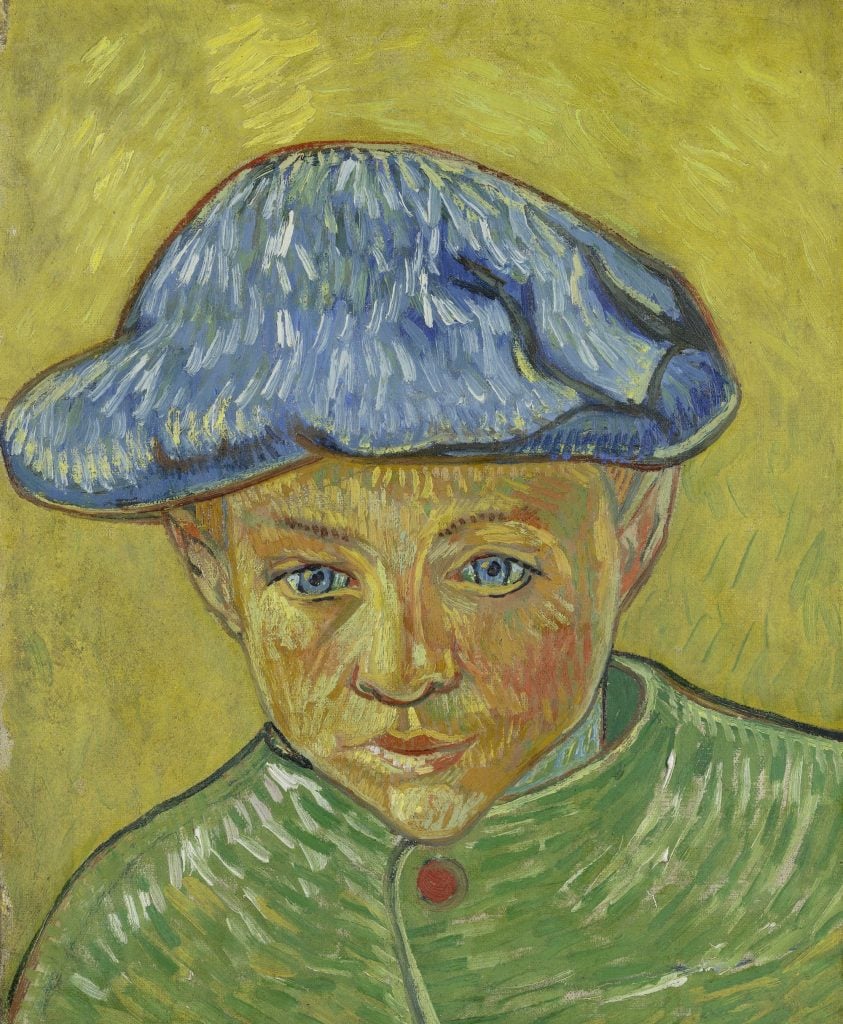Museums & Institutions
The Permanent Collection: Van Gogh’s Little-Known Fixation With One Family
Van Gogh Museum senior curator Nienke Bakker lets us in on some little-known history.

Van Gogh Museum senior curator Nienke Bakker lets us in on some little-known history.

Samuel Reilly

What artwork hangs across from Mona Lisa? What lies downstairs from Van Gogh’s Sunflowers? In “The Permanent Collection,” we journey to museums around the globe, illuminating hidden gems, sharing stories behind artworks that often lie beyond the spotlight.
This is such a happy, colorful painting—a vividly painted, fresh, expressive portrait of a young boy, Camille Roulin. I’m currently preparing an exhibition about Van Gogh’s portraits of the Roulin family in Arles, and so I’ve been spending a lot of time studying this work.
Van Gogh painted it in the first half of December 1888: a fascinating time, when Gauguin was staying with him in Arles, just before the difficult last phase of his life that started at the end of December.
Monsieur Roulin worked at the post office at the railway station; Van Gogh probably met him at one of the cafes where he was always hanging out, but he would also have gotten to know him at the station when he was sending paintings to his brother Theo in Paris, or collecting painting materials sent by Theo. They quickly became friends (and drinking buddies).
There are 20 portraits of the family—including the postman, Madame Roulin, and their three children—and Van Gogh would paint two or even three versions of each, so he could give one to the sitter. After Van Gogh’s mental breakdown, Roulin went to see him in the hospital, and kept Theo and Van Gogh’s sister Willemien in the Netherlands informed of how Vincent was doing. It’s a beautiful story of friendship.
The painting of Camille is especially interesting because of the strong, complementary colours: the green coat and its bright, red button; the blue cap against the yellow background. In painting the face, Van Gogh has used so many colors—greens, oranges, yellows—to render the flesh tones, and the light that’s falling. The large, simple shapes that make up the composition are reminiscent of Japanese prints – but he’s added his own distinctive brushwork, with parallel lines creating rhythm, lending expressiveness.
Van Gogh’s ambition was to make a contribution to modern portraiture, by expressing the character of the sitter through the play of strong colors. But I also like to wonder what Camille would have made of this portrait. You can imagine an 11-year-old boy sighing, “Oh, why do I have a yellow face?”
—Van Gogh Museum senior curator Nienke Bakker, as told to Samuel Reilly